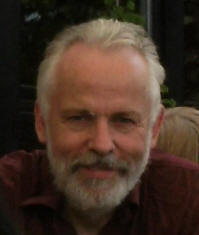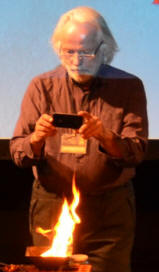|
Many people have experienced the beneficial effects of Agnihotra on their own health and well-being, on animals, plants, and on the environment.
If we trust our own experience – we do not need any scientists to tell us that this method of Agnihotra has beneficial effects.
We have experienced such effects and each month we can see a lot of new evidence of healings by Agnihotra in this Homa Health Newsletter. That is enough reason to continue doing these healing fires – scientific confirmation is not really needed. Still there are some considerations why scientific research about Agnihotra and Homa Therapy makes sense: |
 |
|
- Even though we experience the effects of Agnihotra – some people still would like to know HOW Agnihotra works, what are the underlying mechanisms, how do the energies coming from the sun at sunrise or sunset, the mantras uttered at that time, the copper pyramid of fixed shape and size, and the flame we get by burning specific substances all work together to get the effect we are experiencing? That seems to be quite an interesting question.
- When we are sharing the method of Agnihotra, often we meet with people who are not open to just try and see, experience the effects and then decide whether they want to continue or not – they would like to have some scientific background in order to believe. For such people scientific results would be important and helpful.
- Although we can experience quite a lot of beneficial effects of Agnihotra (on ourselves, on plants and animals), there are areas which are beyond the range of our senses. e.g. we cannot easily find out whether some fruits or vegetables are polluted with pesticides – and therefore cannot easily find out whether it helps to soak these fruits and vegetables in Agnihotra Ash Water overnight. For that, some scientific experiment would help.
|
 |
Or we cannot taste, smell, feel radioactivity. But it is said that Agnihotra and Agnihotra Ash neutralize the negative effects of radioactivity. As our senses cannot detect radioactivity, laboratories and specialized scientists are necessary to answer such questions – we need controlled experiments instead of simple observations.
When we talk about “science”, it is important to make a clear distinction between statements of the Traditional Knowledge of the Vedas – the ancient-most knowledge of mankind – and statements of modern science. The principles of modern science stipulate that each and every statement should be tested before acceptance, there must not be any dogmas. (That modern science does not always follow their own principle is a different story.) |
|
Following this principle we suggest to treat statements from Traditional Vedic Knowledge as hypotheses – which are put to test by modern science. An example: it is said that Agnihotra purifies the atmosphere. One could first identify the different aspects of atmospheric pollution, like biological pollution (bacteria, viruses, fungi), chemical pollution (different sorts of harmful chemicals), physical pollution (harmful particles), and even thought pollution.
One of the hypotheses then could be: bacteria in a room are controlled by performance of Agnihotra. We would then design experiments to test this hypothesis, thus confirming (or refuting) part of the Vedic statement that Agnihotra purifies the atmosphere.
Starting roughly 40 years ago there were always some scientists getting interested in the subject and doing studies. At the beginning it was mainly scientists from Eastern Europe, and we got some very interesting results. In the last years more and more scientists have started to examine the effect of Agnihotra and Agnihotra Ash on our environment as well as on our physiological and psychological health. Especially scientists from different universities, colleges, and research institutes in India are getting involved, and some very interesting research projects have been carried out or are being done right now.
Scientists have found out quite interesting and exciting results, showing the effects of Agnihotra and Homa Therapy in areas such as:
- Environment
- Atmosphere
- Soil
- Water resources
- Animal health
- Human health
- Physical Health
- Mental Health
|
|
|
Dr Ulrich Berk (photo right) was born in Germany, has a Master degree in Philosophy of Science, Sociology and is Doctor of Philosophy (Logic, Mathematics, Psychology). He started with the practice of Agnihotra in the year 1979.
Since 1980 he coordinates research on Homa Therapy, in countries like Russia, Ukraine, Poland, Yugoslavia, India, etc. In India he works in cooperation with different universities like Palampur Agricultural University, Kanpur Agricultural University, Tamil Nadu University, Dharwad University, IIT, Kharagpur, IIT Roorkee, Fergusson College, Pune, Vivekananda University, Bangalore, North Maharashtra University. He is author and co-author of various publications about Homa Therapy and Homa Organic Farming. |


Leave a Reply